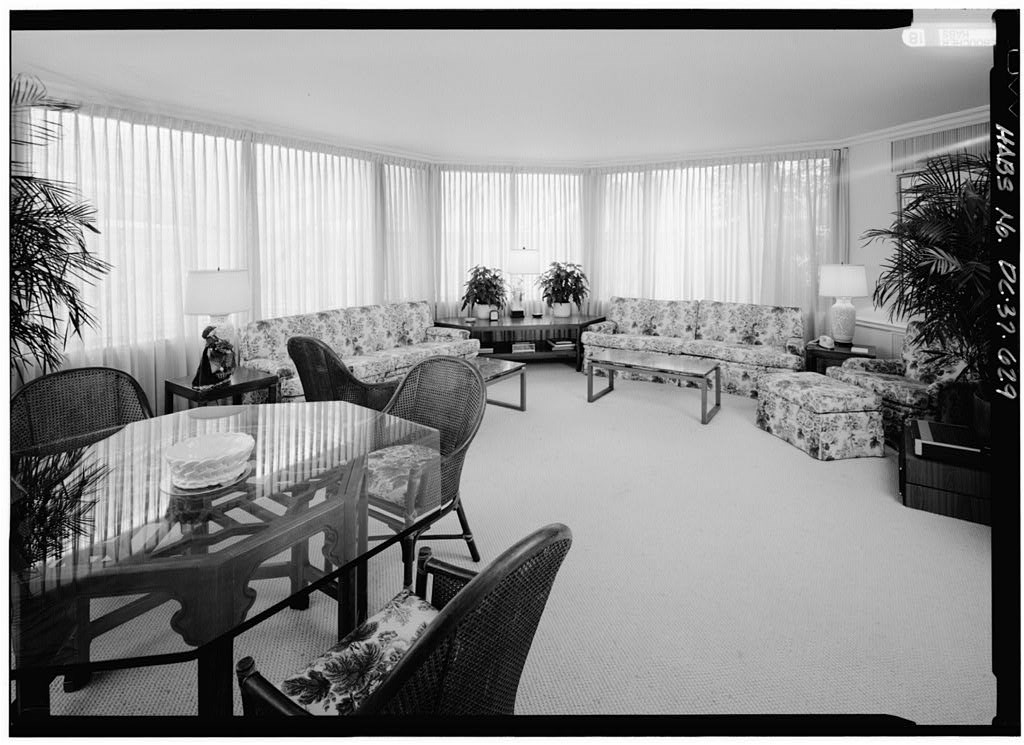Part of a series of articles titled Eisenhower and the Nuclear Arms Race in the 1950s.
Previous: President Eisenhower "Wages Peace"
Article

Library of Congress
As Commander-in-Chief and as a former Army General, Eisenhower at least exerted greater control over the military. He believed in the conservative (what earlier generations would have called republicanism or classical liberalism, terms that change over time though their meanings remain the same) ideal that democracy and militarism are forever at odds, as he held significant faith in civilian rule. Based on these beliefs he called for a reconsideration of the country’s Cold War policies upon taking office. He initiated “Project Solarium”—named for the room of the White House where the project was discussed—which requested three blue-ribbon, top secret panels to separately consider and propose a strategy for America’s Cold War policy.
Group A was headed by diplomat and Soviet expert George Kennan. Kennan’s group concluded that since the Soviet threat remained strong, the previous administration’s containment policy should be continued. They recommended continued expansion of defense spending and military buildup. As reported by Group A, “If we can build up and maintain the strength of the free world during a period of years, Soviet power will deteriorate or relatively decline to a point which no longer constitutes a threat to the security of the United States and to world peace.”
Group B was led by Air Force Major General James McCormack, an expert on atomic weapons. The members of McCormack’s group proposed drawing a “line of no aggression” around the Communist Bloc and areas necessary to the United States security. Entry or expansion beyond the line would result in an atomic attack on the Soviet Union. Group B’s plan offered the advantage of limiting military spending, but featured two major obstacles: where to draw the line, and how to procure Congressional and public support for an atomic war should the Soviets cross the line.
Vice Admiral Richard Conolly headed up Group C in the discussion of the nation’s future Cold War policy. His group advocated an aggressive approach to winning the Cold War and reversing Communism, a policy publicly dubbed “roll back.” They stated that the United States should “prosecute relentlessly a forward and aggressive political strategy in all fields and by all means: military, economic, diplomatic, covert, and propaganda.” Through aggressive means, Communism would be swiftly eradicated and democracy “restored.”
President Eisenhower ultimately adopted none of the three options, choosing instead a combination of the first two, which were drafted into National Security Council Paper Number 162 (NSC 162), his administration’s Cold War blueprint. NSC 162 advocated extensive reliance on nuclear weapons as the country’s primary deterrent to Communist expansionism and aggression. It advocated vigilance against future Communist expansion but not direct roll back unless the United States was in position for victory.
The policy focused on keeping America safe, but as importantly, also fiscally secure. No one in 1953 could predict how many years the Cold War would last and the administration felt strongly that it needed a policy that could be sustained for possibly a decade or more. Secretary of the Treasury George Humphrey explained, “if we mean to face this Soviet threat over a long time, we must spend less than we now are spending and do less than we now are doing.”
Following Project Solarium and the revision of the document to NSC 162/2, the United States had a new doctrine for winning the Cold War at an affordable cost. NSC 162/2 called for the use of an atomic strike force capable of deterring the Soviets from action. To contain Communism, Eisenhower authorized the expansion of the country’s nuclear arsenal and the stage was set for the continued development of nuclear weapons, including what would later be called the Minuteman missile. The number of atomic weapons grew from one thousand in 1953 to more than eighteen thousand by the time President Eisenhower left office in 1961. During this same period, America’s military budget dropped from $50 billion in 1953 to an average of $34 billion with savings achieved largely through reductions in troop levels. The increase in the country’s nuclear arsenal and the idea that Soviet threats and expansionism would be met with awesome power became known as the policy of “massive retaliation.”
Part of a series of articles titled Eisenhower and the Nuclear Arms Race in the 1950s.
Previous: President Eisenhower "Wages Peace"
Last updated: October 20, 2020